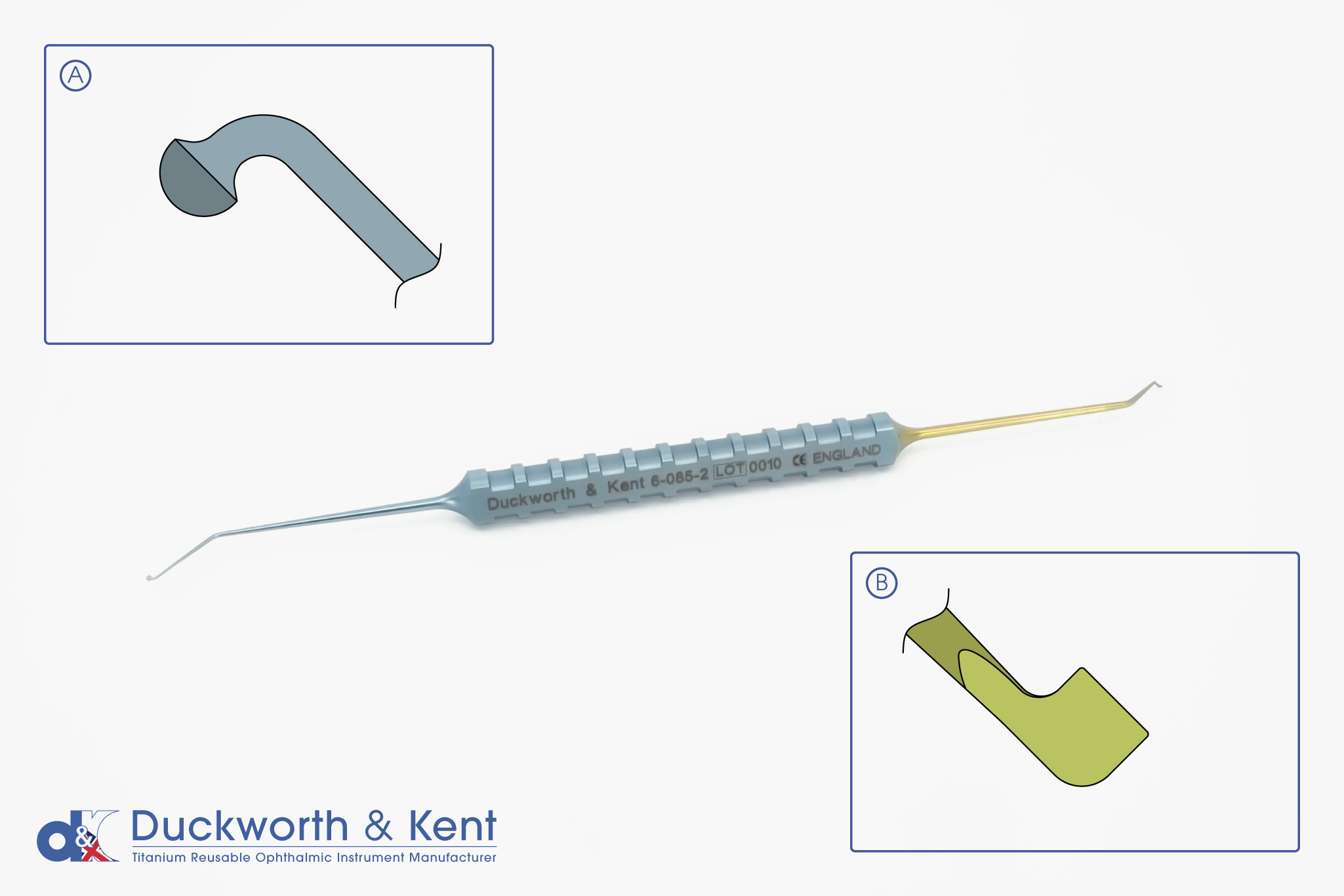The phaco axe is a wedge shaped instrument designed to produce a quick vertical crack of the nucleus during phacoemulsification. The wedge produces a fracture in the vertical plane of the nucleus along fault lines that exist aligned with the lens sutures.
The axe manoeuvre consists of 4 steps, which occur in rapid sequence so that it appears as one fluid movement.
Step 1
The initial step is to engage the nucleus deeply to at least 50 % of the nuclear thickness. A small amount of phaco energy is required to embed the nucleus, which is then held with vacuum alone. The phaco tip should not advance significantly beyond the centre of the nucleus so that there is sufficient space to place the axe in front of the tip.
Step 2
The axe is then moved vertically downwards just in front of and adjacent to the phaco tip to initiate a vertical cleft in the nucleus.
Step 3
The phaco tip moves in an upward and outward motion separating the segment of nucleus away from the axe, which holds the remainder of the lens in position and extending the vertical cleft created by the axe into a crack.
Step 4
The final motion is to separate the axe and the phaco tip to propagate the crack through the full thickness of the lens.
The initial crack tends to propagate along the entire lens and is not confined to one quadrant as tends to occur with initial sculpting and cracking associated with conquer and divide techniques. After the quick vertical crack the segment is engaged on the phaco tip and is removed with the application of ultrasound energy. The axe is well suited to rotating the nucleus for the next vertical crack.
The entire axe manoeuvre is performed within the margins of the capsulorhexis unlike horizontal chopping procedures where access to the lens equator under the rhexis is required. High vacuum levels are therefore not necessary to engage the nucleus as in conventional chopping procedures where the chopper tends to displace the segment of nucleus from the phaco tip.
A mushroom manipulator is better suited for manipulating epinuclear material and this is provided on the other end of the phaco axe.
The technique is well suited to Dual Linear systems where the linear control of phacoemulsification and aspiration allows the surgeon to simultaneously control these parameters and use just the required energy and aspiration to embed the phaco tip and remove each segment of nucleus.
The phaco-axe produces a quick vertical crack of the nucleus, which allows the surgeon to rapidly fracture and remove a cataract with less energy than conventional nucleofractis techniques, which rely on sculpting and with greater safety, and precision than other chopping manoeuvres.




















